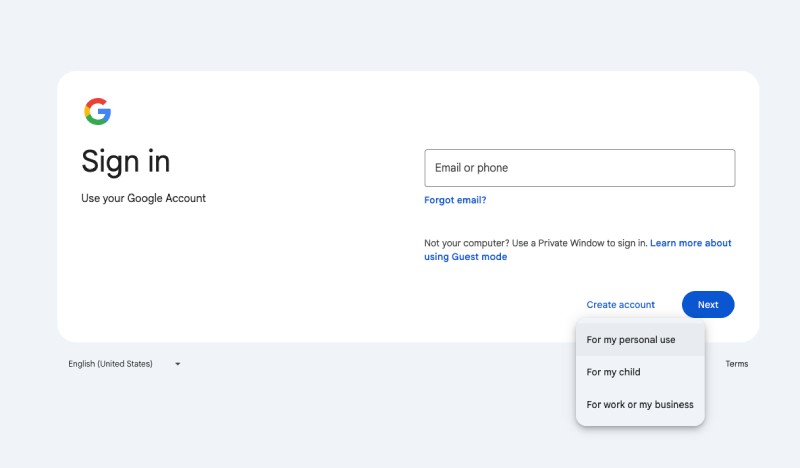 Marketing aims to do much more than just sell a product or service. Effective marketing tactics also puts your brand into the customer’s mind. Before rushing into your next business venture, consider what the customer wants, and how you can market your product or service in a way that makes people want to buy through marketing research.
Marketing aims to do much more than just sell a product or service. Effective marketing tactics also puts your brand into the customer’s mind. Before rushing into your next business venture, consider what the customer wants, and how you can market your product or service in a way that makes people want to buy through marketing research.
Important Steps In The Marketing Research Process
Many businesses rely on the marketing research process to learn everything they can about a targeted market area before promoting a specific product or service. The marketing research process can be broken down into several manageable steps.
1. Defining The Goals Of The Project
This first step is arguably one of the most important. Problem definition consists of defining the goals of the project. Create a list of clear, written objectives designed to address specific problems or provide solutions to hurdles. Defining objectives helps fill in the gaps of what information is needed to maximize your marketing efforts. By understanding what problems your company faces, you can perform focused research to work through setbacks in a way that is beneficial to your company’s bottom line. For example, a problem might be “How should we price this new app?” By working through the marketing research process, you can reach a viable solution that makes sense.
 Now, not all problems faced by management are easy to define. Start by looking at the problem from a research angle, and then determine a solution for the problem at hand. For example, “sales are declining” is a common management issue. When defining the problem, work through all of the potential aspects that affect or contribute to this problem. What are customers looking for? At what price do they want it? What do competitors have that we do not?” Look at every group in your target audience: first-time buyers, repeat buyers, and potential customers.
Now, not all problems faced by management are easy to define. Start by looking at the problem from a research angle, and then determine a solution for the problem at hand. For example, “sales are declining” is a common management issue. When defining the problem, work through all of the potential aspects that affect or contribute to this problem. What are customers looking for? At what price do they want it? What do competitors have that we do not?” Look at every group in your target audience: first-time buyers, repeat buyers, and potential customers.
You do not need to define the problem on your own. Gain insight from other professionals in your business sector or industry. Problem definition generally involves discussion from key decision makers within the company, analysis of data, interviews with industry experts, and maybe even wisdom from focus groups. Marketing research aims to provide companies with accurate information that reflects the business’ true state of affairs and should always be conducted impartially. Once the problem has been clearly defined, the next step in the marketing research process can successfully begin.
2. Development Of An Approach To The Problem
This next step consists of formulating a theoretical framework or objective, as well as research questions, analytical models, hypotheses, and identifying factors that may influence the research design. This complex process is typically guided by discussions with company management, industry experts, analysis of secondary data, case studies and simulations, and qualitative research. This formal statement of research objectives may be stated in quantitative or qualitative terms. They can also be expressed in the form of statements, hypothesis, or research questions. For example, a company may express a research objective in the form of a statement as “To find out to what extent the price of the product has affected the sales volume.”
Start by considering what information you already have. If necessary, conduct an informal study known as a situation analysis to determine exactly what information pertaining to the problem area is already available to your company. If this information can help define the problem, determine what additional information is needed, if any. A situation analysis often requires discussion from informed people who understand the problem at its roots. These informed people may be employees in the company, stakeholders, subcontractors, or similar industry professionals involved in the business.
Incorporate secondary data to provide background information for the problem or to offer some answers. Secondary data is information that has already been collected and/or published, meaning no additional work must be done to utilize this information. You can find a variety of sources to pull information, such as company files, associations, libraries, private research organizations, or government agencies. One of the most powerful sources for secondary data is the internet. With a wealth of information at your fingertips, it has never been easier to find the data you need. While conducting a situation analysis can be very informative, it does take time and research.
3. Research Design Formulation
Next up in the marketing research process is research design formulation. In this step, you will want to design your research tool. In some instances, something as simple as a survey is the most effective research tool. If you choose to go this route, you will need to write a list of questions and design your survey questionnaire. When using a focus group, prepare materials and questions for a moderator. Once you begin to collect data from research, do your best to make sure that the information is valid and unbiased.
 In this stage, the ideal type of data to collect is scientific or analytical data, as well as emotional data that you cannot get from simply looking at a graph. Gain insight from real people who can provide personal stories. You will also want to formally observe the behavior of buyers using multiple different researchers who are conducting observations and recording the data on a standardized data collection form. These forms can be either electronic or paper form. Recording this data correctly is crucial to make it comparable. Include identifying information, such as the shopper’s gender, age, and how he or she interacted with the product or service.
In this stage, the ideal type of data to collect is scientific or analytical data, as well as emotional data that you cannot get from simply looking at a graph. Gain insight from real people who can provide personal stories. You will also want to formally observe the behavior of buyers using multiple different researchers who are conducting observations and recording the data on a standardized data collection form. These forms can be either electronic or paper form. Recording this data correctly is crucial to make it comparable. Include identifying information, such as the shopper’s gender, age, and how he or she interacted with the product or service.
Your research design is essentially a blueprint for conducting your marketing research project. It should essentially detail all of the procedures needed to obtain the required information. Formulating the research design often consists of several essential steps, including secondary data analysis, qualitative research, and the methods used to collect quantitative data, such as observation, survey, or experimentation. Next, a definition of the information is needed, followed by the measurement and scaling of procedures. You can then work on the questionnaire design, followed by the sampling process and the plan of data analysis.
4. Field Work Or Data Collection
As you select techniques to use, your research design should continue to develop. You have several options for collecting data with the two most common methods being interviews and observation. With interviews, you will be responsible for developing a list of questions, asking these questions to a target group, and receiving responses that are then recorded for a comparable analysis later on. Interviews can be collected in a number of ways, such as by mail, by email, by telephone, over the internet, or face-to-face. These effective research techniques are referred to as survey research and may be used in experimental and non-experimental research.
The second most common way to collect data is through observation. This method involves carefully observing a person’s or business’s past or present behavior. Observation can provide a company with great insight about what works and what does not. It can also be used to predict future purchasing decisions. Other data collection techniques while looking at past behavior can include analyzing business records or reviewing expert studies that have been researched and published by outside sources.
You can quickly streamline this step of the marketing research process by using tools readily available on the internet. Online survey tools allow businesses to quickly set up surveys and deliver them directly to their target audience. This makes the process fairly painless. Of course, mistakes can and do occur at all stages of market research. For example, if some respondents of your survey are not readily available to provide answers to your questions, it may be difficult to obtain the information needed for a proper analysis. This can result in ongoing issues as other decisions may be based off of the collected survey data. Having safety precautions in place can help remedy such issues that may occur in the data collection stage.
5. Data Preparation & Analysis
Once essential data has been successfully collected, you can then get down to analyzing and studying this collected information. The next stage in the marketing research process involves interpreting the data to determine what it really means for your brand, product, and service. In quantitative research, this step of the process generally involves statistics. While analyzing your data, make sure that your sample is really representative of your target audience. Note that it is not generally possible for a marketing team to collect all of the information that they would like about a population. However, enough data is usually collected to create clear findings.
 When comparing collected data, it is important to understand that an estimate from the sample data will usually vary slightly from the true value for a total population. Having a larger sample size from the start can help you achieve a more accurate picture. However, this is not always possible for a variety of reasons, including the higher cost associated with more extensive research. You will also run into validity problems as some people may respond to questions even if they do not know the answer. You may also receive poorly worded answers that may be difficult to understand.
When comparing collected data, it is important to understand that an estimate from the sample data will usually vary slightly from the true value for a total population. Having a larger sample size from the start can help you achieve a more accurate picture. However, this is not always possible for a variety of reasons, including the higher cost associated with more extensive research. You will also run into validity problems as some people may respond to questions even if they do not know the answer. You may also receive poorly worded answers that may be difficult to understand.
At the end of this step, the marketing team must decide whether or not the analysis of data fully supports any conclusions that are drawn. In some cases, the answer is clear due to exact calculations or statistical procedures. However, this is not always the case. A marketing team may misinterpret some data, especially if they fail to understand the management problem. By working alongside researchers, managers, and other employees on the management team, this common problem can be greatly diminished.
6. Report Preparation & Presentation
The final step in the marketing research process involves visualizing your collected data and communicating the results. After spending extensive time collecting and analyzing raw data and implementing this data into easy-to-read graphs and charts, it is now time to prepare a report and present your work. An effective way to present the collected data is through your research objectives and defined business problems that were stated in the first step. In your presentation, restate these critical questions and statements and present recommendations based on the data. Your presentation should address each of the issues defined at the start of the marketing research process.
 When presenting your collected data, do so in a way that is fully informative. While the use of graphs, charts, and tables are useful for showing data in a comparable way, you will also want to present personal insights, recommendations, and answers to questions that your audience may have. You will also want to fully explain charts and graphs in a way that explains the outcome to your audience and the implications of the outcome. This form of critical thinking can take your marketing research presentation to the next level.
When presenting your collected data, do so in a way that is fully informative. While the use of graphs, charts, and tables are useful for showing data in a comparable way, you will also want to present personal insights, recommendations, and answers to questions that your audience may have. You will also want to fully explain charts and graphs in a way that explains the outcome to your audience and the implications of the outcome. This form of critical thinking can take your marketing research presentation to the next level.
This last step should essentially solve the problems or objectives stated early on. If the research fails to provide information that helps you solve problems or make future decisions, your company has essentially wasted money and research time. When each step of the marketing research process is conducted properly and with great detail, you will be able to apply your findings to your business and long-term marketing plan. It should also prove useful in nearly all aspects of your business strategy, from markets to pricing. You may also find that the results affect other areas of the workplace too, such as operations, distribution channels, and employee motivation.
Continuous Analyzation & Improvement
If you are a manager or business owner, you may run into difficulties when making strategic decisions or choosing the best direction for your company’s marketing efforts. When faced with such a dilemma, the marketing research process can prove helpful. This simple six step process clearly defines the problems, analyzes the situation, gathers critical data, and interprets this data to solve the initial problems. When all six steps in the marketing research process are followed in the proper order, it should lead to a solution that benefits all aspects of your business. If not, it may be helpful to go back to previous steps to determine where information is lacking.







